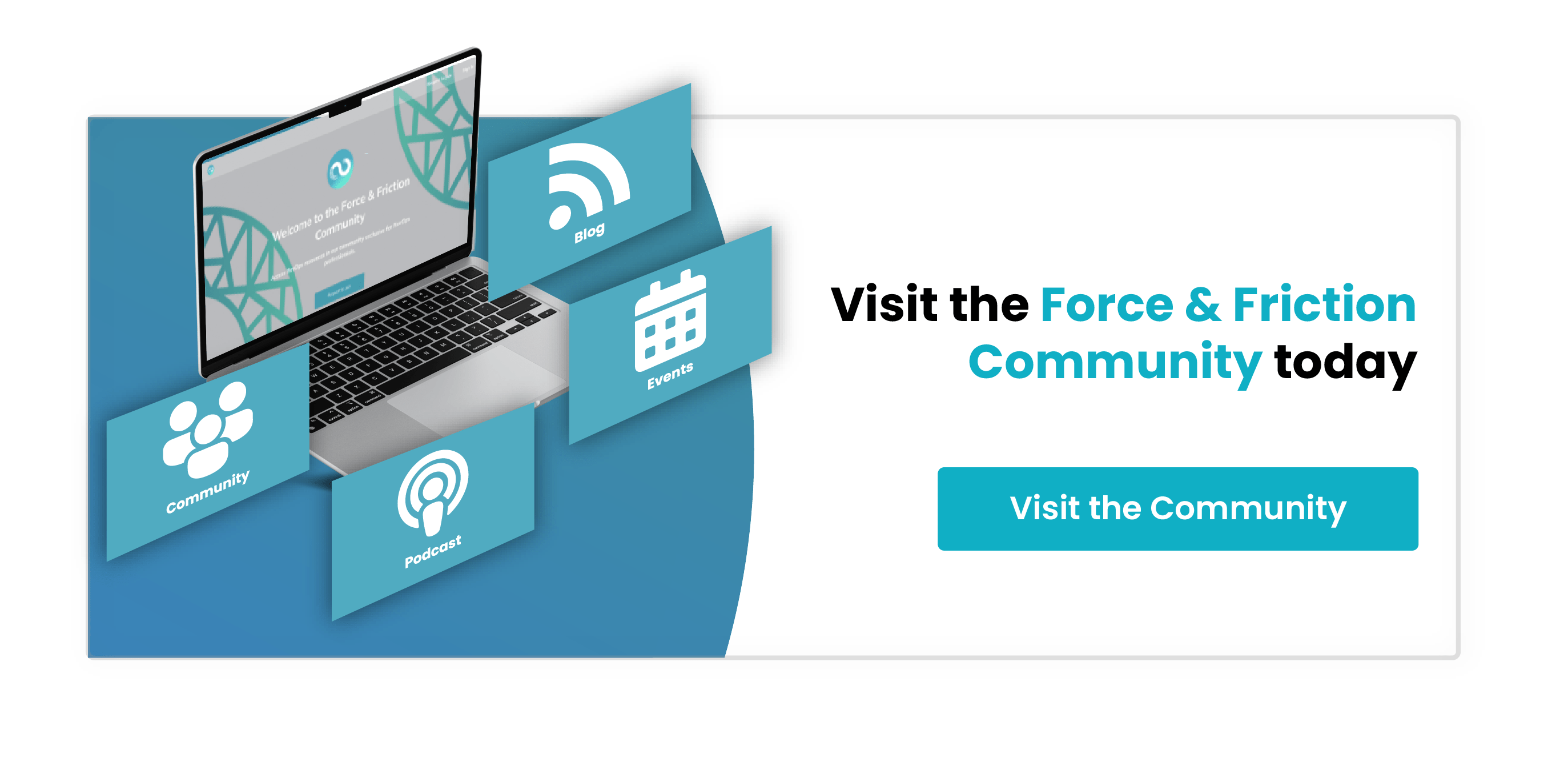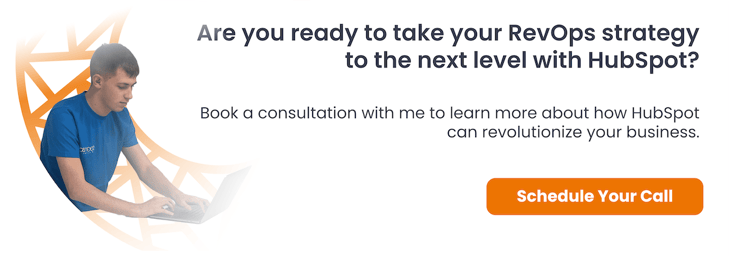
How To Create Your Marketing Processes Inside Revenue Operations
No matter your business size or sector, marketing very often acts as a lynchpin for your business success. Whether it takes the form of a radio advert, a Google ads campaign, social media posting, exhibition attendance or press outreach, your marketing department plays a crucial role in building brand awareness, generating leads and ultimately, growing revenue.
A well thought-out, data-driven marketing process allows businesses to better understand their customer base, develop products and services that meet their needs, and create effective marketing campaigns to generate leads, convert prospects into customers, and retain loyal customers over time.
The strategy to attract and retain customers through the creation of content tailored to their specific requirements falls under the umbrella of inbound marketing.
While traditional outbound marketing tactics can be disruptive (such as cold calling) inbound marketing meets prospects where they’re at, with useful, helpful content that attracts, engages and delights.
This approach is especially important today, when personalised experiences matter more than ever. McKinsey research confirms that 71% of modern consumers expect personalised interactions from brands.
The old school mass email or cold call which defines outbound marketing is the polar opposite of this preference. Inbound, by contrast can fulfil this expectation.
The rewards for getting it right are obvious, while the penalties for getting it wrong are only becoming more severe.
“Personalization drives performance and better customer outcomes,” McKinsey notes. “Companies that grow faster drive 40 percent more of their revenue from personalization than their slower-growing counterparts”. That’s perhaps no surprise when you consider that 76%”
McKinsey’s research further indicates that for today’s consumers, personalisation means demonstrating an investment in the consumer, rather than focusing solely on the transaction, sharing how-to videos, and creating helpful touchpoints. These examples are all central to the ethos of inbound marketing.
Successful marketing doesn’t just happen. It requires careful planning, research, and execution. And most importantly, it should always reflect and align with the overarching goals of the business as a whole. To do that, marketing processes should sit within revenue operations.
Creating an effective marketing process inside revenue operations requires:
An understanding of the sales and marketing funnel: The funnel is the process through which potential customers move from the awareness stage to consideration and then decision making.
Helpful Key Performance Indicators (KPIs): Establishing KPIs for both marketing and revenue operations - such as lead generation, conversion rates or revenue growth - is essential for measuring success.
Clearly defined marketing and RevOps roles and responsibilities: Each person in marketing and revenue operations needs to know precisely what their role is in the overall process and what they are working towards.
Open communications channels which allow for collaborative working between teams, such as sales and marketing, ensures everyone can move forward cohesively towards those goals. A RevOps SLA can be especially helpful here.
A lead management process: A well-defined process to manage leads will maximise the lead-to-sale successes ratio.
A revenue attribution model: Which marketing campaigns are succeeding in driving revenue and which ones are not? Having the answer to this question will allow teams to prioritise their work - whether they intend to focus more on the campaigns that are working, or improve those that are not.
Constant optimization: A process which works perfectly today may not work as well in a few months’ time. A process of continual assessment and improvement is required to fully optimise budgets and resources expended.
Building Your Inbound Fundamentals
As we’ve seen, inbound marketing is focused on the creation and distribution of helpful content. That could be a blog post, a how-to guide, a video shared on social media or myriad other formats.
While it sounds simple in principle, it can be harder in practise to get right. The challenge stems from knowing what the audience wants, needs, and would find helpful.
To fulfil that need, it’s vital to get to grips with inbound marketing fundaments. This includes work such as developing accurate personas and building a deep understanding of each demographic being targeted. Without this insight, you simply can’t claim to know what helpful content looks like.
If your organisation sells animal supplies in the UK, for example, you’ll want to speak to an audience of pet owners, ideally based in the United Kingdom. A large amount of traffic from people who live in Australia, or do not own pets, is not likely to generate leads and even less likely to eventually turn in sales and revenue.
However, ‘pet owners’ is a very broad spectrum, encompassing many different demographics, budgets, pain points, challenges and desires.
Developing multiple buyer personas is therefore important to understand all of the different types of consumers you’re targeting and what their drivers are. What is helpful to one person, may be obvious to another.
Creating diverse personas enables you to build a clear picture of those nuances. Each persona is a representation of one type of ideal customer, based on demographics and behaviour patterns. Your existing customer base is a very useful starting point for building personas.
Once you know all of the different types of people you need to attract, and what makes each of those buyers tick, you’re much better placed to begin thinking about the type of content they will need across their buyer journey and therefore what you’ll subsequently need to create.
This content needs not only to be of a high-quality but must also be relevant to your target audience.
Thinking again about your pet business, if your objective is to sell more dog products, the best-put-together infographic about the correct care of pet snakes is unlikely to catch the interest of the intended target audience.
Some overlap between dog and snake owners is not impossible, but neither is it significant enough to attract a decent number of leads.

The Inbound Methodology Flywheel
The Inbound Methodology Flywheel is a framework developed to illustrate the flow that drives business growth through the acquisition, retention, and expansion of a customer base.
Unlike the traditional funnel, which has a set beginning and end referring to a single ‘journey’ from the awareness stage to the end deal, the Flywheel embraces a circular idea of the marketing process, reflecting the on-going relationship between a business and its customers.
There are three stages to the Flywheel: Attract, Engage, Delight.
-
Attract: Customers are attracted through the creation of content which is relevant to their interests and needs. This content can come in different forms such as videos, blog posts, images, infographics, social media updates, and more.
The tone set can be informative, entertaining, or both - it entirely depends on the tone set for the marketing campaign. What matters is that the content is valuable to the company’s target audience, and able to catch their attention. -
Engage: After successfully attracting the attention of a potential customer, the challenge is to keep that attention to nurture that prospect. Offering information which is useful, for example to solve a problem or to fulfil a need is most appropriate at this stage.
Don’t forget, it should also be personalised to meet consumer expectations.
While the buyer persona is useful to define your ideal customer, offering a personalised experience to each potential customer makes it far more likely for them to progress to the sale stage.
Marketing emails, webinars or other types of content may be perceived as a simple annoyance if they’re not personalised to suit a prospect’s specific needs.
In short, your customer should never feel as though they are just one of thousands getting a carbon copy of the same email. -
Delight: the final stage of the Flywheel is to go above and beyond - providing exceptional service to not just satisfy but delight your customers.
Loyalty programmes, surveys asking for feedback, personalised communications - they’re all excellent tools to foster long-term relationships with customers, in a virtuous cycle that maximises both customer satisfaction and the company’s revenue growth.
Understanding the Buyer's Journey
The buyer's journey refers to a process that every prospect undergoes in order to become a customer. This process also consists of three stages: Awareness, Consideration, Decision.
The awareness stage starts when the buyer, aware of a problem they need to solve or a need they need to fulfil, starts looking for a solution.
To continue with the previous example of pet supplies, imagine the customer has a strong dog who tends to pull on its lead, and they would like the pulling to stop. They start researching solutions online, asking for recommendations from people they know, or visiting stores.
The consideration stage comes when the potential buyer has identified some feasible solutions to their dog’s pulling problem, which may for example include training sessions with a dog trainer or a harness built specifically to gently discourage pulling.
The prospect is actively considering which solution best fits their needs at this point.
This may involve comparing product reviews, prices, and other considerations. For example, they may decide that they lack the time to take their dog to training sessions, and that the no-pull harness is the best solution to their problem.
Next comes the final stage: the decision. After considering their needs, the buyer has settled on a specific product or service and is ready to go ahead with the purchase - be it by personally going to a store, placing an order online, or contacting a sales representative.
The stages of the buyer’s journey may seem deceptively simple, yet it is important to understand each of them, in order to tailor your marketing strategies and material for every step.
By understanding the needs of the prospect and offering them valuable information you can encourage that consumer not just to make a one-off purchase but to return time and time again.
In the case of the no-pull harness for a dog, the marketing team may follow up with useful tips and products to best manage a strong or high-energy dog, dietary advice and similar to continually fuel the flywheel.
What does Inbound Marketing Look Like?
What does inbound marketing look like? The answer to that question is that it probably looks a little bit different to what many people picture when they hear the phrase marketing.
To many, that could bring to mind adverts which pop unprompted on to a screen, an advert interrupting a radio program or an unsolicited email arriving from a brand trying to sell something.
In practise, inbound marketing is the antithesis of that experience. It’s a strategy of attracting customers through valuable content and experiences, and of building trust. In short, attention is not demanded with disruption, but earned with helpfulness and understanding. It takes far more effort, but it’s also far more likely to pay off.
As well as content creation, other tactics used in inbound marketing include:
Search engine optimisation: The use of relevant keywords, title tags and meta descriptions (this should take place along with link building and other activities such as review generation).
Optimisation helps your content rank higher on search engines, and therefore be seen by exponentially more people. The use of keywords your target audience is likely to search for is the best way to get the most desirable kind of traffic - people with a real need for your product or service.
Automation: The use of software to automate certain marketing tasks, such as the scheduling of social media posts, lead tracking, and sending email.
Social media marketing: The sharing of your content and engagement with your audience on social media platforms such as Facebook, Twitter, LinkedIn, and Instagram.
You may find that not all of your personas are present on each platform, and not all platforms are relevant to your brand. Understanding your audience via persona development and having a strategy in place to measure the impact of your efforts can help you to decide which social networks are worthy of your resources.
Email marketing: Sending regular email updates and promotions to people who have expressed interest in your content and products.
It is important to ensure only those who have opted in to receive communications from you are included on your email distributions. Unsolicited email is more often than not relegated to the spam folder.
Landing pages: A well-designed landing page can capture leads with high potential for conversion. Offering a free resource or trial period in exchange for contact information is a tried-and-tested way to grow your sales pipeline.
Analytics: Tracking the impact of your inbound marketing campaigns, to better identify what’s working and what is not is key to making data-driven pivots to continually improve outcomes.
Your Inbound Marketing Toolkit
The successful execution of an inbound marketing campaign that generates leads and grows revenue requires more than just knowledge: it calls for the right tools, too. The ideal inbound marketing toolkit includes:
Content Management System (CMS)
A CMS is a software application which allows all users to build, manage and grow a website in a simple, convenient way with no technical coding required. Templates and extensions can be purchased, and the user-friendly interface allows for easy customisation and publishing processes. WordPress, HubSpot, and WooCommerce are among the most widely used CMS.
Email marketing software
Sending marketing emails entails more than pasting several addresses as BCC in the same message and sending it off. A dedicated email marketing tool will perform many functions. It will help with design, coding and email layout, handle subscriptions and allow for list management. It will also provide analytics such as open rates and click-through rates and allow for testing of various subject lines and content options to help you elevate email performance. MailChimp and Constant Contact are two well-known email marketing solutions.
Social media management
A basic social media management tool will make it to schedule social media posts, across all of your social media channels. A more advanced tool will go much further, with features such as social listening (monitoring for mentions of your brand name on social media). Hashtag research and optimal posting times. The most well-known platforms include Hootsuite, Buffer, and SproutSocial.
Search engine optimization tools
SEO tools, such as Google Search Console, SEMrush and Moz, are designed to help you complete vital SEO tasks more efficiently. Features often include page auditing and keyword research along with competitor research, link profile audits and content audits.
Landing page builders
Much like a CMS system, landing page builders allow users with little to no technical knowledge to create visually attractive, functioning landing pages while working to continually improve their performance via small, incremental changes and testing. Unbounce and Instapage are two popular choices.
Customer relationship management (CRM)
As the name suggests, CRM software is built specifically to help manage interactions and relationships with customers. It is a tool that allows companies to organise and automate their activities, such as sales, marketing, and customer support. Many will offer additional features such as sales forecasts and lead tracking. Popular CRM software options include Salesforce, Zoho, and HubSpot.
Identifying and setting you analytics key numbers
The ability to identify and set analytics key numbers is paramount to measuring the success of your inbound marketing efforts.
An essential first step is to establish and articulate your overall goals. This defines what you’re aiming to achieve via your inbound marketing efforts. For example, the goal may be increasing traffic to the company website, or growing customer retention figures.
Next, you’ll determine relevant key performance indicators. Appropriate KPIs show how you’re progressing towards your stated goals. If the goal is increased traffic, appropriate KPIs to monitor would be metrics such as website visits, average time on page and bounce rates.
After establishing which KPIs are relevant, the use of analytics tools - such as Google Analytics or HubSpot – allows you to go much further and assess the data being gathered. This can allow for performance comparisons to be carried out and aid in decision making to refine, test and then measure once again.






%20-%20Teal.png?width=500&height=130&name=Force%20%26%20Friction%20-%20Branding%20-%20Logo%20(White)%20-%20Teal.png)